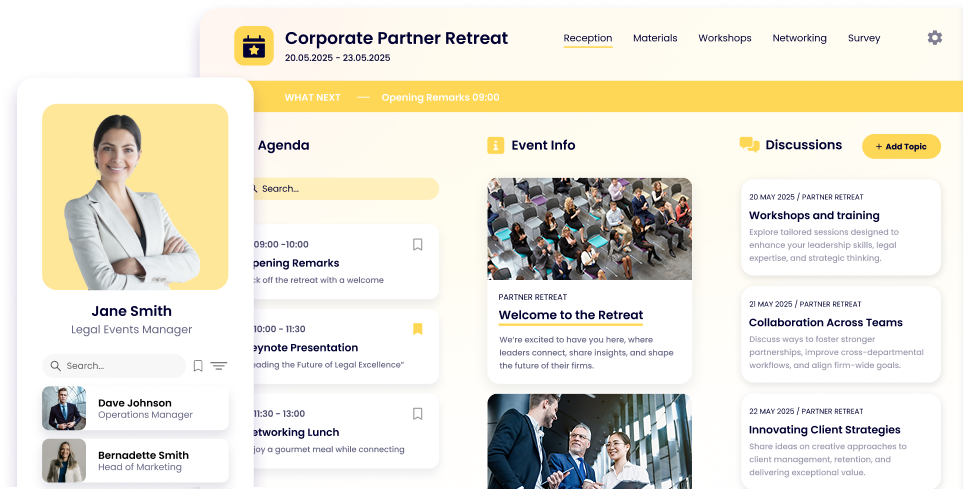Lead Scanner: Choosing the Right Lead Scanner for Your Event

Lisa Broom | Head of Marketing

Leads drive sales. Sales drive growth. Growth drives success. So, if you want to succeed, you need leads. It’s as simple as that. And a lead scanner is probably the easiest way to produce high quality leads at your next event.
Choosing the right lead scanner app for your event can make a significant difference in capturing valuable leads, ensuring efficient data collection, and enhancing the overall attendee experience. Prioritizing the right technology helps streamline these processes and boosts your event’s success. Let’s explore how to select the perfect lead scanner for your needs.
Key Takeaways
- Understanding what a lead retrieval scanner is and its benefits
- Types of lead scanners available
- Key considerations for choosing the right lead scanner
- Implementing lead scanners effectively
- Post-event lead management strategies
What is a Lead Scanner?
A lead scanner is a device or app used at events to capture and store attendee information quickly and efficiently. These tools streamline the lead retrieval process, making it easier to follow up with potential clients or partners after the event.
Benefits of Using Lead Scanners at Events
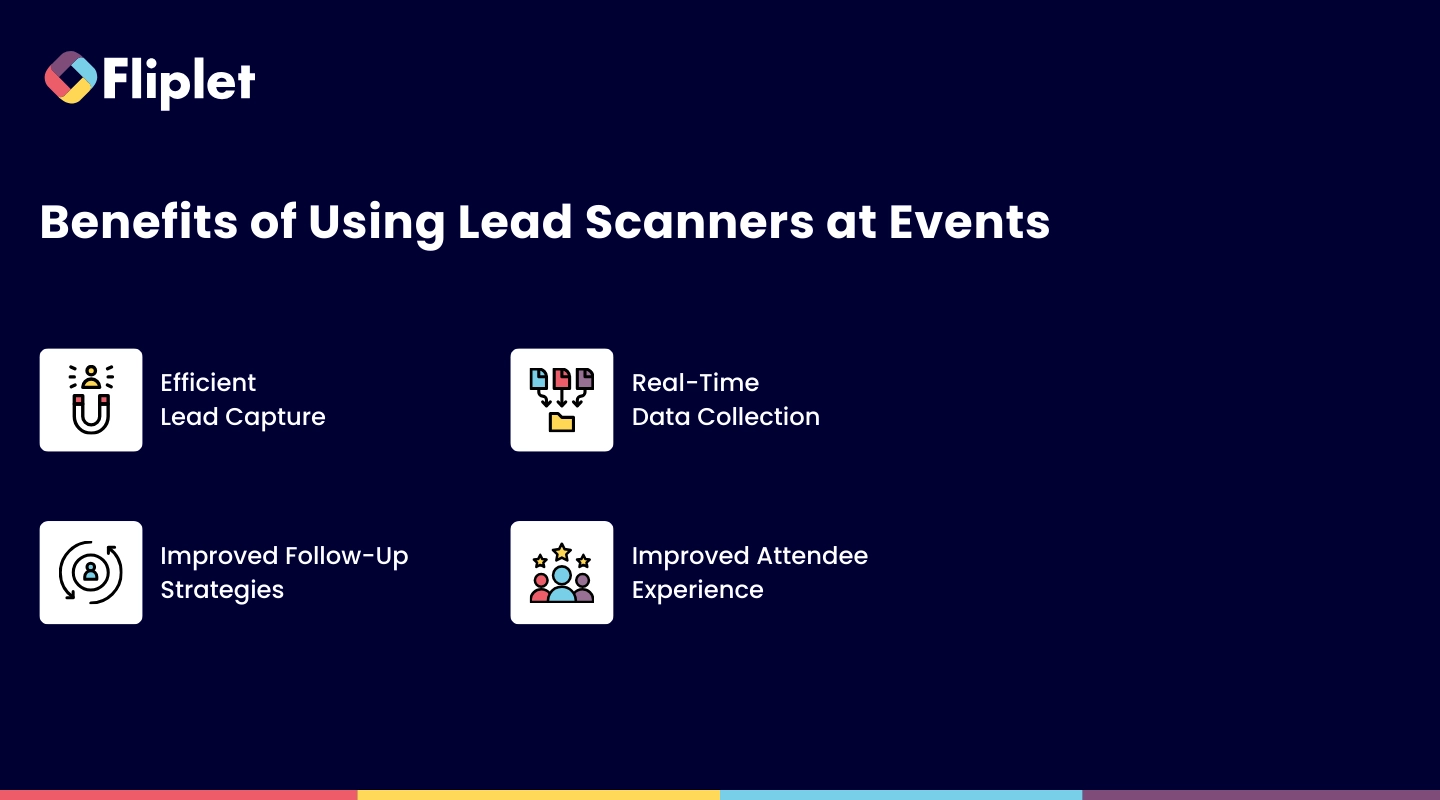
Efficient Lead Capture
Lead scanners automate the process of capturing attendee information, reducing manual entry errors and saving time.
Real-Time Data Collection
Real-time data collection allows for immediate insights and analysis. Tools like Fliplet’s mobile polling app can enhance audience engagement by capturing instant feedback.
Improved Follow-Up Strategies
With accurate and organized data, follow-up strategies can be more targeted and effective, leading to higher conversion rates.
Improved Attendee Experience
Seamless and quick lead capture improves the attendee experience, reducing wait times and ensuring smooth interactions.
Types of Lead Scanners
Mobile Lead Scanners
Mobile lead scanners are portable devices or smartphone apps that allow on-the-go lead capture, ideal for busy event environments.
Desktop Lead Scanners
Desktop lead scanners are stationary devices suitable for booths or registration desks, offering robust features for high-volume scanning.
QR Code Scanners
QR code scanners use quick response codes for rapid lead capture, enabling attendees to share their information with a simple scan.
NFC Lead Scanners
NFC (Near Field Communication) lead scanners use short-range wireless technology for contactless data exchange, providing a modern and efficient solution.
How to Choose the Right Lead Scanner for Your Event
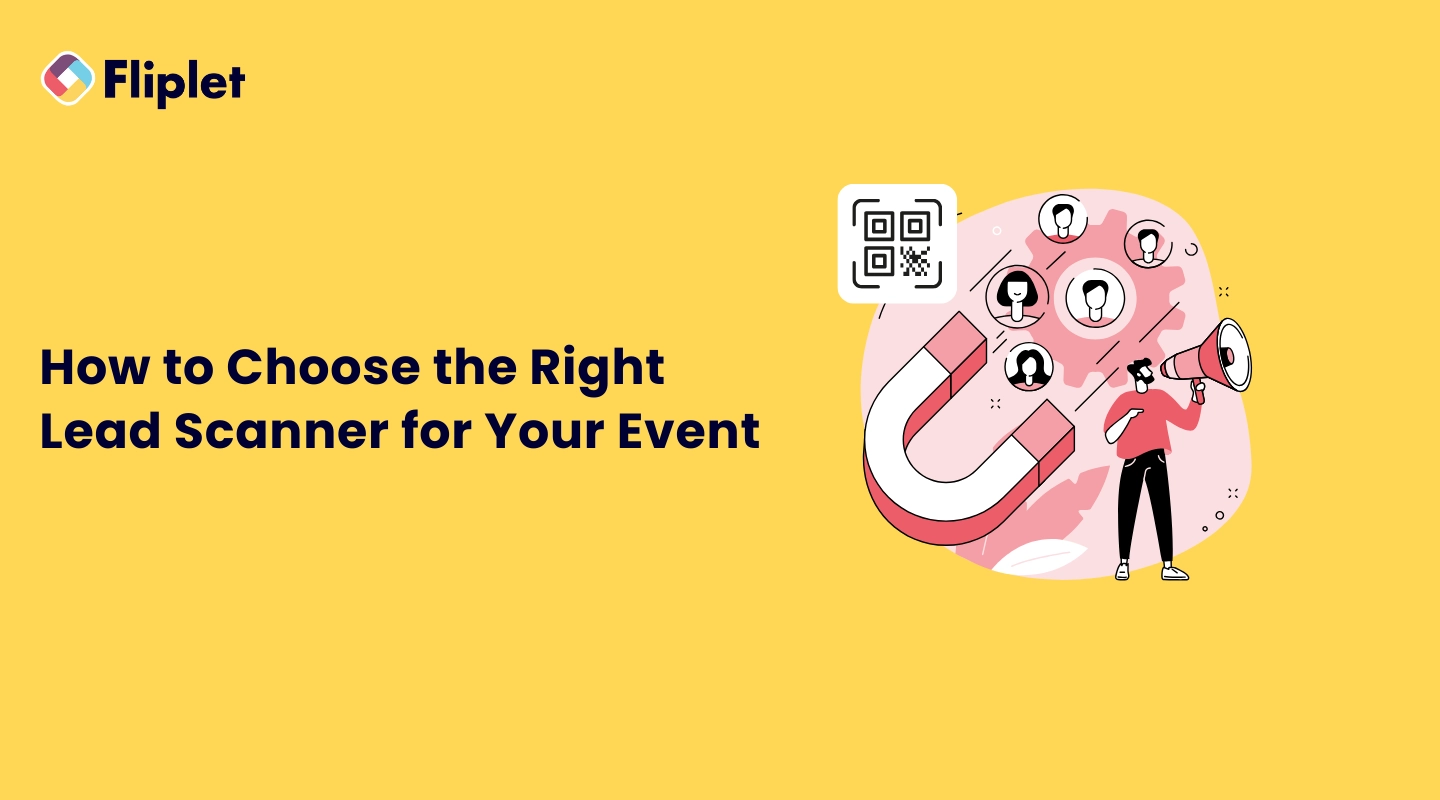
Consider Event Size and Type
Different events have unique requirements. For large expos, a high-capacity lead scanner might be necessary, whereas smaller gatherings might benefit from a mobile app.
To gather insights and real-world experiences on effective lead retrieval methods, you can explore discussions on forums like Reddit.
For instance, a thread on the r/marketing subreddit highlights various methods and tools used at expos. Participants in the discussion share their preferences for different lead retrieval methods, such as QR code scanners and NFC-enabled devices, and provide feedback on what works best for different types of events. This type of community insight can be invaluable in helping you make an informed decision based on practical, real-world applications and experiences — after all, these are real people in situations that could be very similar to yours.
Evaluate Integration with Existing CRM
When selecting a lead scanner, it’s crucial to ensure it integrates seamlessly with your existing Customer Relationship Management (CRM) system.
A smooth integration allows for automatic data transfer, reducing the need for manual entry and minimizing errors. This seamless data flow ensures that leads captured during the event are quickly and accurately imported into your CRM, facilitating timely and effective follow-ups. Additionally, integration with your CRM can enable advanced analytics, allowing you to track the success of your lead capture efforts and optimize your strategies for future events.
Look for lead scanners that offer APIs or direct integrations with popular CRM systems like Salesforce, HubSpot, or Zoho to streamline this process.
User-Friendliness and Ease of Setup
User-friendliness and ease of setup are critical factors when choosing a lead scanner. Opt for tools that have an intuitive interface and require minimal technical expertise to operate. This minimizes the learning curve for your staff, allowing them to focus on engaging with attendees rather than troubleshooting technology.
Easy setup also means that you can deploy the lead scanners quickly, even in dynamic event environments. Features such as drag-and-drop configurations, step-by-step guides, and responsive customer support can greatly enhance the user experience.
A user-friendly tool ensures that your team can efficiently capture leads, enhancing the overall efficiency and success of your event.
Data Security Features
With the increasing focus on data privacy and protection, it is essential to choose a lead scanner with robust security features to safeguard attendee information. Ensure that the lead scanner complies with data protection regulations such as GDPR or CCPA.
Look for features like data encryption, secure data transfer protocols, and user authentication to prevent unauthorized access. Additionally, consider the provider’s data retention policies and ensure that you have control over how long the data is stored and how it can be securely deleted when no longer needed.
By prioritizing data security, you can protect sensitive information, maintain attendee trust, and avoid potential legal issues.
Implementing Lead Scanners at Your Event
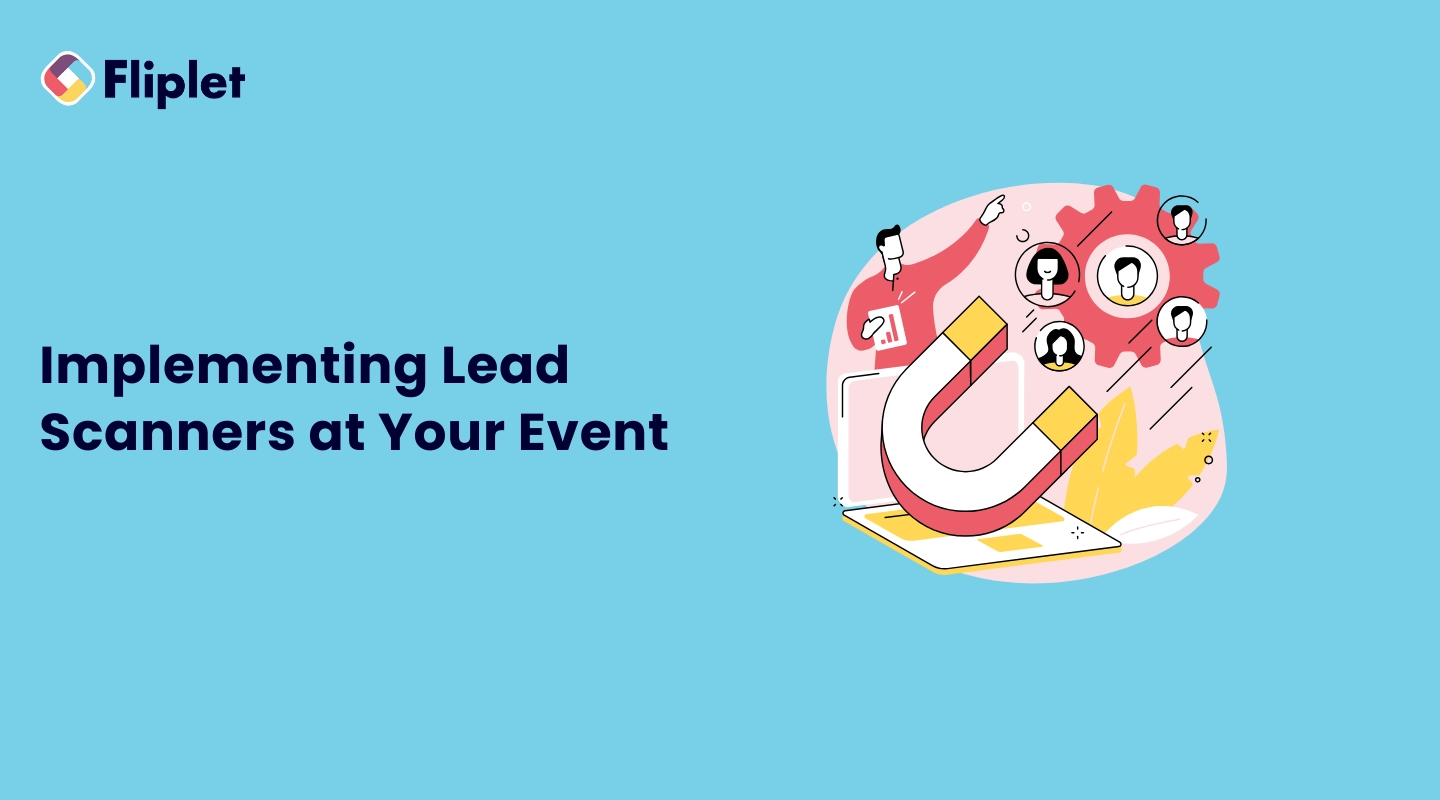
Pre-Event Preparation
- Plan and configure your lead scanners well in advance to ensure they meet your event requirements.
Proper planning and configuration of your lead scanners well in advance is essential to ensure they meet your event requirements. Start by defining your goals and understanding the specific needs of your event, such as the number of attendees, the layout of the venue, and the types of interactions expected.
This allows you to choose the appropriate lead scanner tools and features. Test the devices and software thoroughly before the event to ensure they work flawlessly. Additionally, create a detailed plan that includes the placement of scanners, data management procedures, and contingency plans for any technical issues that may arise.
Training Staff and Vendors
- Train your staff and vendors on how to use the lead scanners effectively.
Effective use of lead scanners depends on the proficiency of your staff and vendors. Provide comprehensive training sessions to ensure they understand how to operate the devices, troubleshoot common issues, and assist attendees with the scanning process.
Well-trained staff and vendors can significantly enhance the efficiency of lead capture and improve the overall attendee experience.
If you are look for the best employee training apps, check out our guide. We cover all the most popular options, including Fliplet, TalentLMS, Litmos by SAP, and more.
Setting Up Lead Scanners
- Set up your lead scanners at strategic locations to maximize lead capture opportunities.
Strategic placement of lead scanners is crucial for maximizing lead capture opportunities. Identify high-traffic areas within your event venue, such as entrances, registration desks, and popular exhibit booths.
Ensure that scanners are easily accessible and clearly marked. Setting up lead scanners in these key locations increases the likelihood that attendees will engage with them. Additionally, consider the layout and flow of your event to avoid bottlenecks and ensure a smooth scanning process.
Promoting Lead Scanning to Attendees
- Inform attendees about the lead scanning process to encourage participation.
Informing attendees about the lead scanning process and its benefits is essential to encourage participation. Use multiple communication channels, such as emails, event apps, and on-site signage, to explain how lead scanning works and why it’s valuable.
Highlight the ease and speed of the process and reassure attendees that their data will be handled securely. Refer to our article on attendee engagement for more detailed strategies on promoting lead scanning and boosting participation.
Encouraging Attendee Participation
- Use incentives and clear instructions to motivate attendees to share their information via lead scanners.
Motivate attendees to share their information via lead scanners by using incentives and providing clear instructions. Offer rewards such as entry into a prize draw, exclusive content, or discounts for those who participate in lead scanning.
Make sure instructions on how to use the lead scanners are simple and visible. Providing staff assistance can also help attendees feel more comfortable with the process. For more information, check out our article on attendee engagement here.
Regularly Checking Scanner Functionality
- Ensure all devices are functioning correctly throughout the event to avoid data loss or technical issues.
Throughout the event, it is crucial to ensure all lead scanning devices are functioning correctly. Regularly check the scanners to prevent data loss or technical issues. Have a dedicated team on standby to address any problems promptly.
Conducting routine checks and maintenance during the event helps maintain smooth operations and ensures that all captured data is accurate and complete.
Post-Event Lead Management
Data Analysis and Reporting
- Analyze the captured data to gain insights and measure event success.
After the event, the first step in lead management is to analyze the captured data to gain insights and measure event success. Fliplet’s data capture app can provide detailed analytics and reporting, helping you understand attendee engagement, lead quality, and overall event performance. Because the tool is built into the flow of the event, this makes deep-dive analytics almost effortless.
Look for trends in the data, such as the most popular sessions or the demographics of the most engaged attendees. These insights can inform your future event planning and marketing strategies.
Follow-Up Strategies
- Develop effective follow-up strategies to nurture leads and convert them into clients.
Developing effective follow-up strategies is essential to nurture leads and convert them into clients. Personalize your follow-up communications based on the data captured during the event. Segment your leads into categories such as hot, warm, and cold, and tailor your messaging accordingly.
Utilize email campaigns, personalized messages, and scheduled follow-up calls to keep the conversation going. The goal is to build a relationship with each lead, addressing their specific needs and interests.
Measuring Lead Quality and Event ROI
- Assess the quality of leads and calculate the return on investment (ROI) to evaluate the event’s success.
Assess the quality of the leads captured and calculate the ROI to evaluate the event’s success. Use metrics such as lead conversion rates, engagement levels, and revenue generated from leads to measure lead quality.
ROI can be calculated by comparing the total cost of the event to the revenue generated from the leads. This evaluation helps determine the effectiveness of your lead capture strategies and identifies areas for improvement.
All About Lead Scanner Software and Tools
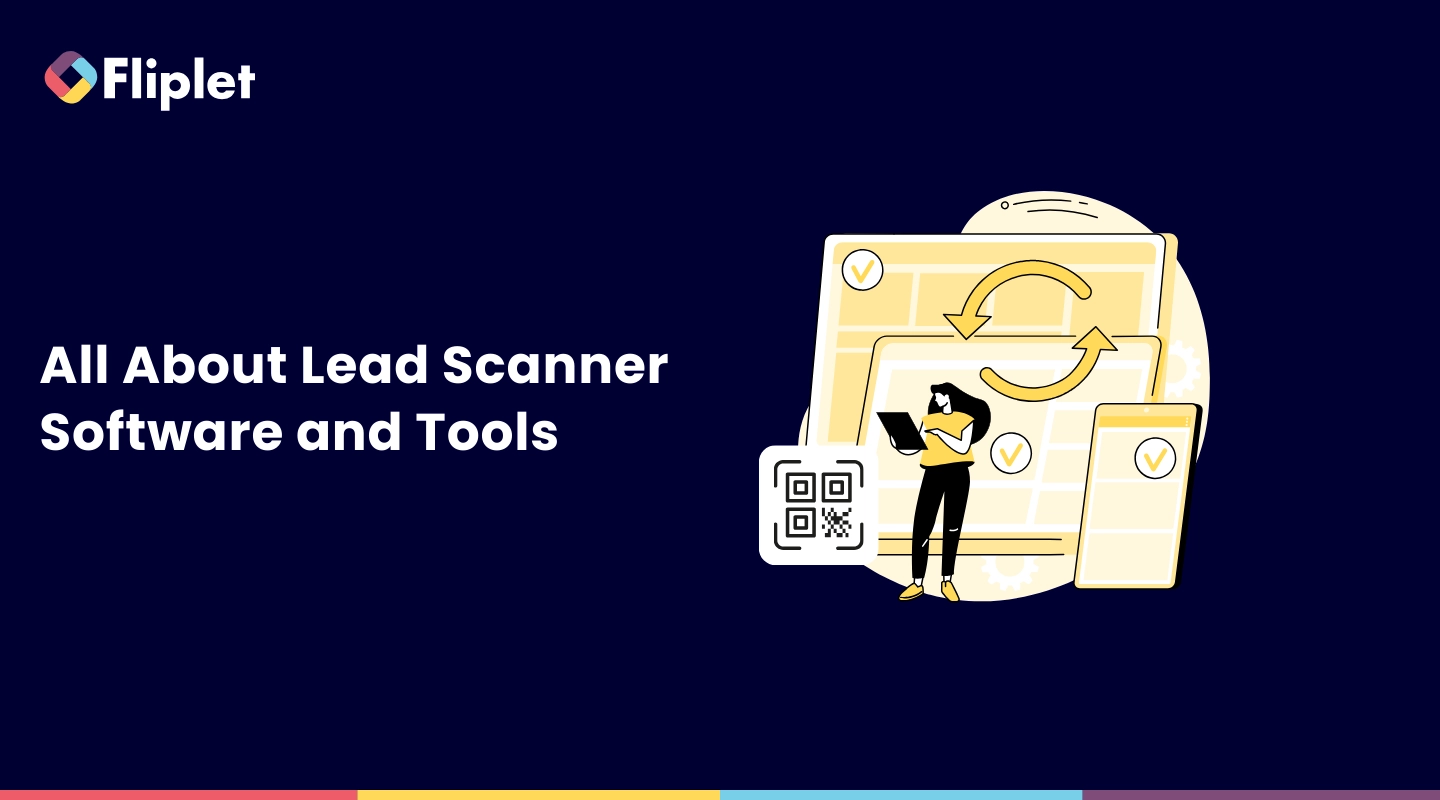
Overview of Popular Lead Scanning Software
Explore the most popular lead scanning software to understand their features and benefits. Platforms like Fliplet, Leadature, Cvent LeadCapture, and EventMobi Lead Capture offer a range of functionalities designed to streamline lead retrieval and management. Evaluate these tools based on their user reviews, features, and compatibility with your event needs.
Popular Options:
- Fliplet
- Leadature
- Cvent LeadCapture
- EventMobi Lead Capture
Key Features to Look For in Lead Scanning Tools
Identify essential features when choosing lead scanning tools. Look for integration capabilities with your existing CRM, ease of use, data security, and real-time analytics. These features ensure that the lead scanning process is efficient, secure, and provides valuable insights for follow-up strategies.
The key features to look for in a lead scanning tool are:
How to Compare Different Tools
Use comparison tools and review sites like G2 to evaluate different lead scanners and find the best fit for your needs. These platforms provide detailed comparisons, user reviews, and ratings that can help you make an informed decision.
Pay attention to factors like:
- customer support
- pricing
- scalability
Real-Life Examples of Successful Lead Scanning

If you are looking to run a great event, lead scanning should be swift and effortless.
As one use on G2 that used Fliplet for their event said, “[it’s] a great app and service for Event Organisers.”
That’s because all the functionality you need can be streamlined into a fully custom app, one where lead scanning effortlessly sits next to all the other needs your event has.
A Digital Marketing and Brand Manager on Capterra notes that shortly after choosing Fliplet, “we have put together apps for events, pitching, client service, and even converted a lot of our old PDFs into cool apps. Really happy with the service too, they always have someone available in their live chat.”
In this case study, you can read how a leading international law firm used Fliplet to customize an app for events in just 30 days. The app facilitated entrance scanning and enhanced conversations, significantly improving the overall conference experience.
Just think of the ways you can integrate lead scanning into your next custom event app! For instance, you could make a QR code generator and scanner!
Find the Perfect Lead Scanner for Your Events with Fliplet
Lead scanners allow you to capture more high quality leads at your next event. And a great lead scanner? It could make the difference between a failed event and a highly successful one.
So it’s time to find out how the leading lead scanner app could change your events forever.
Book a free discovery meeting with the Fliplet team to learn more about our lead scanning solution.
FAQs
How do lead scanners integrate with CRM systems?
Lead scanners typically offer seamless integration with CRM systems, ensuring smooth data transfer and follow-up.
What are the best practices for using lead scanners at events?
Best practices include training staff, pre-configuring devices, promoting scanning to attendees, and ensuring data security.
How can I ensure data accuracy when using lead scanners as a beginner?
Ensure proper setup, train your staff thoroughly, and regularly check the functionality of the scanners.
What are the costs associated with lead scanning tools?
Costs vary based on features and capabilities, so compare different tools to find one that fits your budget and needs.




